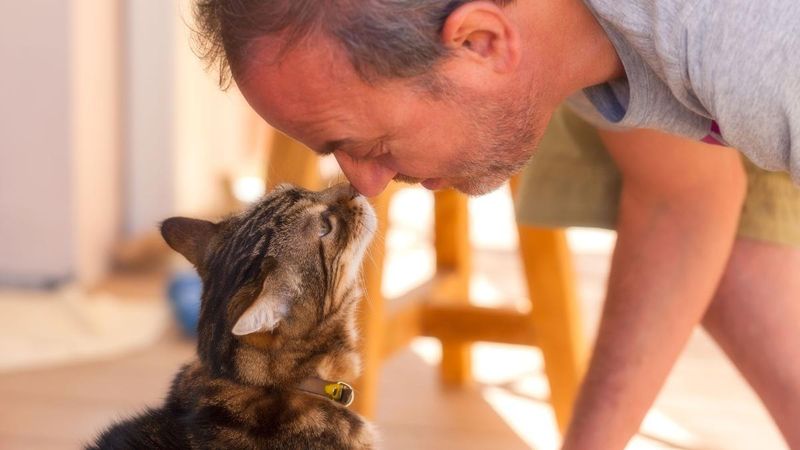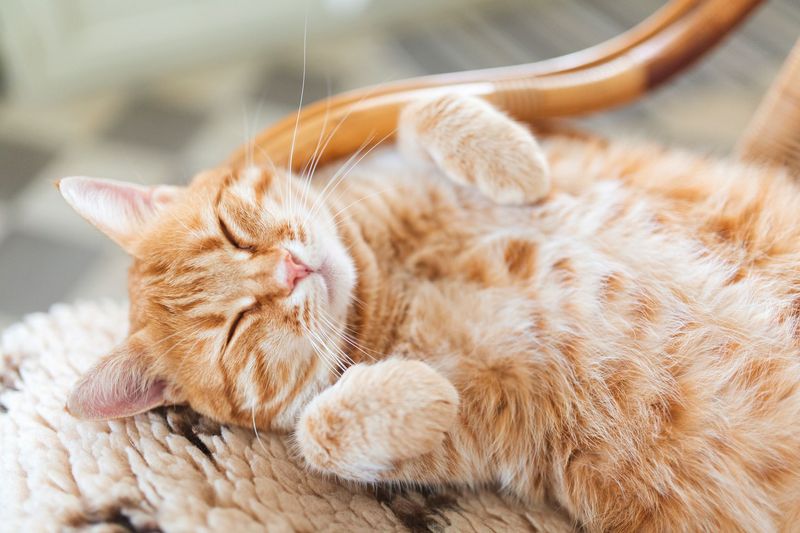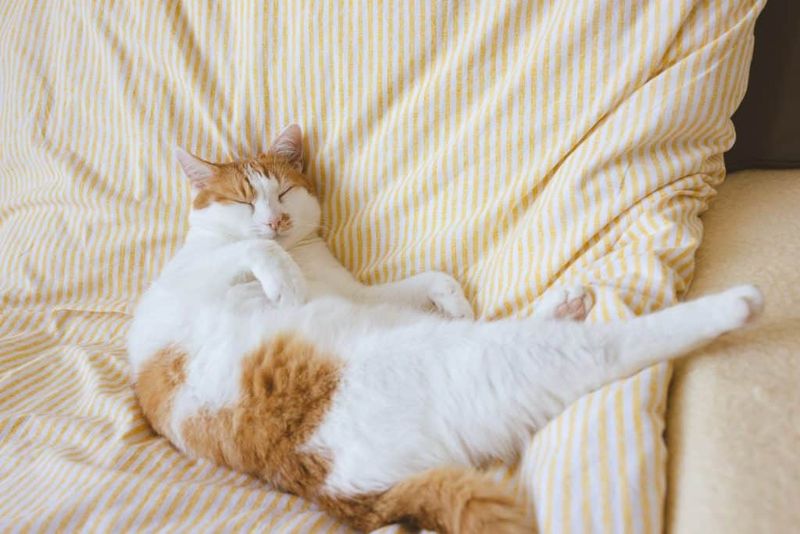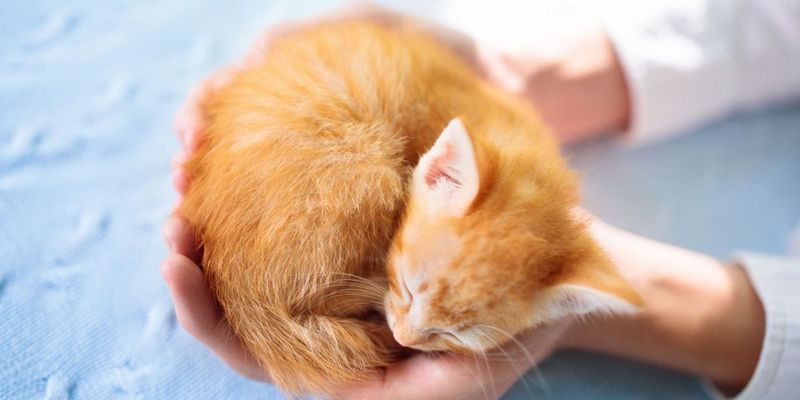📖 Table of Content:
While they may not wear their hearts on their sleeves like dogs, cats thrive in environments where they feel secure, respected, and loved. When emotional safety is established, it lays the foundation for a cat to truly flourish—physically, behaviorally, and socially.
Many cat behaviors that humans interpret as quirky or unpredictable are actually tied to the cat’s sense of security. A cat that hides, becomes aggressive, or refuses to eat may not be “moody” but rather uncertain about its environment. Emotional safety means your cat doesn’t have to be in survival mode—it can shift into thriving mode. Over time, this emotional stability begins to manifest in small but powerful ways that transform your daily interactions and your bond.
Understanding what happens when a cat feels safe allows you to better support your pet’s mental and emotional health. It also helps you recognize positive changes as signs of trust and contentment. Below are seven beautiful transformations that occur when a cat feels emotionally safe long-term—each one a testament to the quiet, rewarding journey of earning your cat’s trust.
1. Heart-Melting Affection Emerges
A emotionally secure cat becomes your personal cuddle buddy. Those gentle head-bumps against your hand aren’t accidents—they’re deliberate signs of trust and love. Your cat is marking you as safe territory while saying “you’re mine” in the sweetest possible way. Slow blinks—those lazy, half-closed eye movements—are actually kitty kisses! When your cat feels safe enough to be vulnerable, you’ll find them curling up on your lap more often or kneading your stomach with their paws. Even previously standoffish cats may surprise you by sleeping beside your pillow or gently touching their nose to yours. These precious moments of connection happen only when your cat knows, deep down, that you represent safety and love.
2. Playful Spirit Awakens at Any Age
Remember those viral videos of cats zooming around the house at 3 AM? That’s what happens when felines feel truly secure! Even your dignified 12-year-old kitty might suddenly pounce on a toy mouse with kitten-like enthusiasm when emotional safety is established. Play isn’t just fun—it’s a sign your cat feels comfortable enough to express their wild side. You’ll spot them crouching behind furniture, tail twitching with excitement before ambushing an unsuspecting toy. These playful moments reveal your cat’s hunting instincts in a safe environment. The more secure they feel, the more likely they’ll engage in these natural behaviors rather than hiding or remaining constantly vigilant. A playing cat is a happy, confident cat who trusts their surroundings.
3. Mealtime and Grooming Routines Stabilize
Food left untouched in the bowl? Matted fur? These could be signs your cat doesn’t feel emotionally secure. When cats feel safe, their self-care routines become remarkably consistent and thorough. A content cat approaches meals with enthusiasm rather than anxiety. You’ll notice them eating at regular times without gulping food fearfully or avoiding their dish altogether. Their coat becomes glossy from regular grooming sessions—those methodical licking rituals that sometimes last for what seems like hours! Healthy grooming indicates your cat feels relaxed enough to focus on maintenance rather than survival. When your feline friend maintains these routines without disruption, it’s a powerful indicator they feel protected in their environment. Their physical health directly reflects their emotional wellbeing.
4. Adventurous Curiosity Takes Center Stage
Fearful cats become shadows, slinking along walls or hiding under furniture. But emotionally secure cats? They’re the feline explorers of your home! That cardboard box you just brought in becomes their personal investigation project. When visitors arrive, a secure cat might cautiously approach to sniff their shoes rather than disappearing for hours. New furniture arrangements become exciting territories to claim rather than threatening changes to avoid. Your curious companion will confidently patrol their domain, whiskers forward and tail held high. This exploratory behavior shows your cat trusts that new things won’t harm them. They know their environment is predictable and safe, with you as their reliable protector. Their willingness to investigate strange objects or unfamiliar people demonstrates profound trust in their world.
5. Vocal Personality Shines Through
Silent kitties find their voice when emotional safety arrives! A cat who feels secure will communicate more freely—whether through melodic trills when you enter a room or conversational meows while you prepare dinner. Body language becomes more expressive too. Notice how your cat’s tail positions change to signal different emotions, or how they might chirp excitedly at birds outside the window. These communication attempts show they expect you’ll respond appropriately, not with unpredictability or anger. Some cats develop unique sounds just for their favorite humans. That special greeting when you come home or the distinctive purr-meow combination at breakfast time represents your cat’s personalized language with you. This expanded vocabulary emerges only when they feel safe enough to express their authentic personality.
6. Body Language Reveals Deep Contentment
That exposed belly isn’t always an invitation to rub—but it is a declaration of trust! When cats display relaxed postures, they’re essentially saying: “I feel safe enough to be vulnerable around you.” This comfort level takes time to develop and should be celebrated. Look for slow, luxurious stretches that extend from nose to tail tip. Watch for half-closed eyes while lounging in sunbeams or the famous “cat loaf” position with paws tucked neatly underneath. These postures are physically impossible for a tense, anxious cat to maintain. The location of these relaxation sessions matters too. A cat who feels secure might doze off in the middle of a busy room rather than hiding in a closet. This central positioning shows they trust their environment completely, including the humans who share it.
7. Unbreakable Human-Cat Bond Forms
The magical transformation of a cat accepting you as family happens gradually, then seemingly all at once. Emotionally secure cats incorporate you into their social group—a profound honor considering cats’ naturally independent nature. You’ll notice your furry friend following you from room to room like a fluffy shadow. They might greet you at the door with an upright tail quivering with excitement or choose to sleep pressed against you despite having countless cozy spots throughout the house. This deep bond manifests in synchronized routines—they learn your schedule and adjust accordingly. Morning coffee? They’re there. Evening reading? They appear for lap time. These aren’t coincidences but deliberate choices to share life with their trusted human companion. This integration into each other’s daily existence forms an unspoken bond that enriches both your lives.







